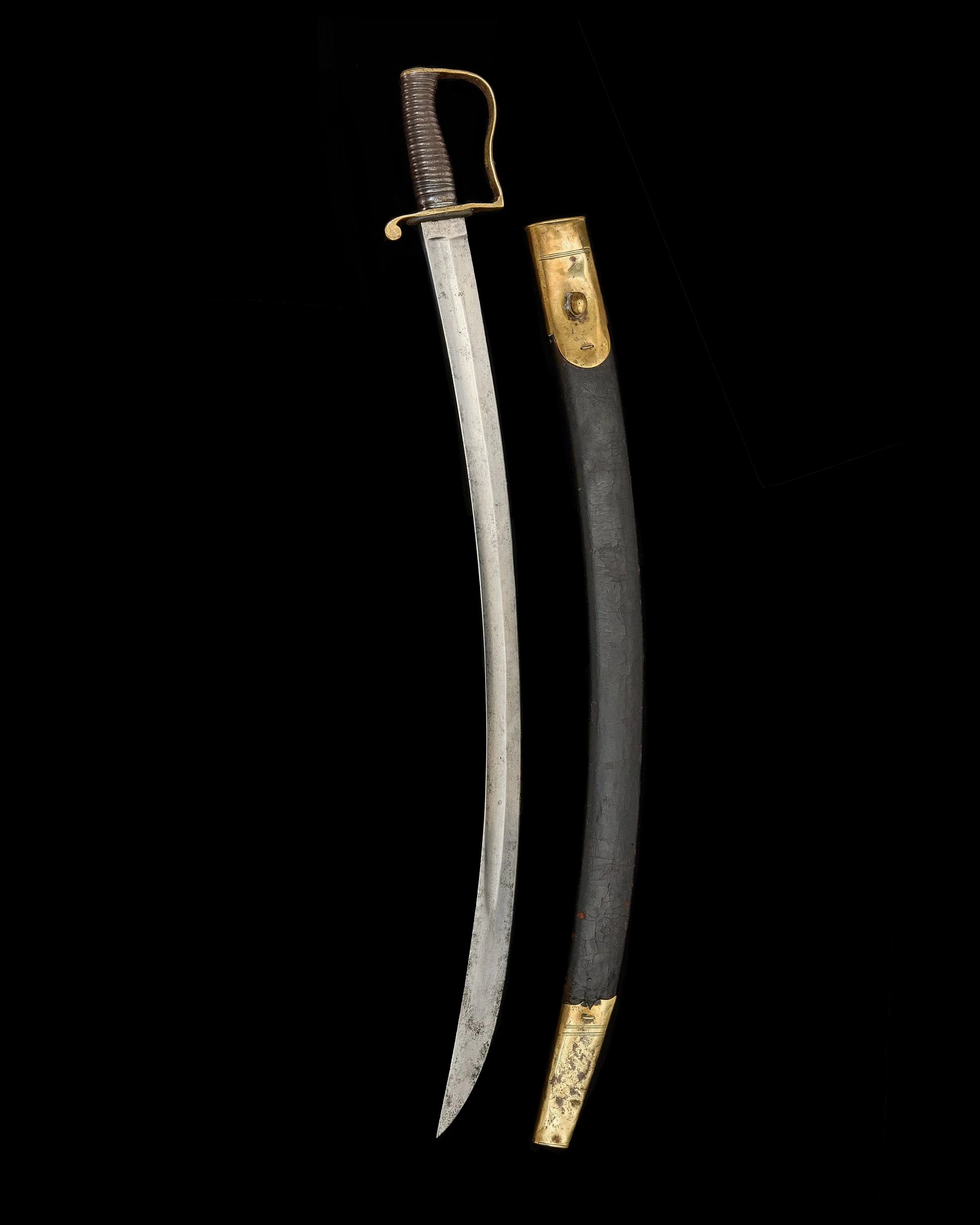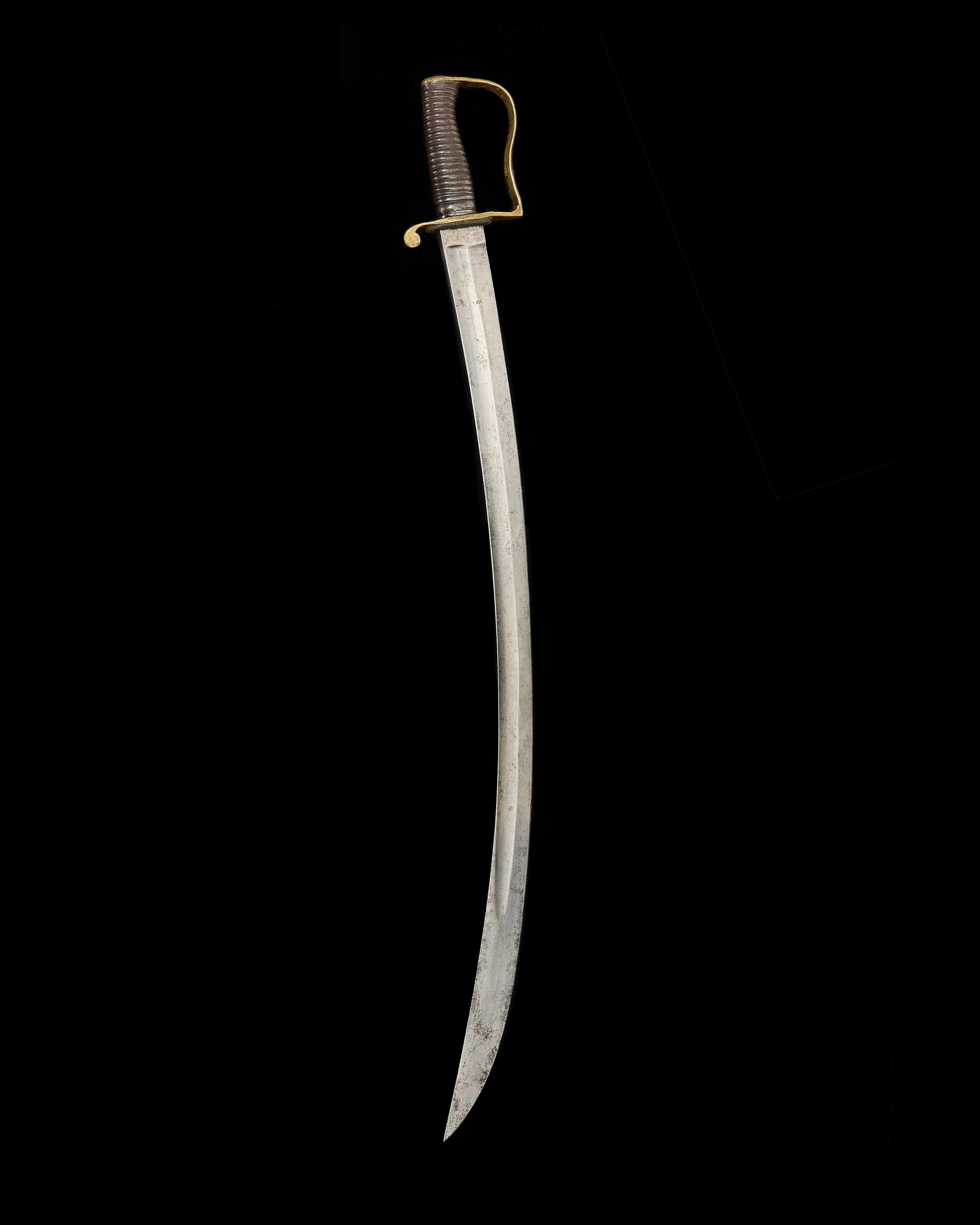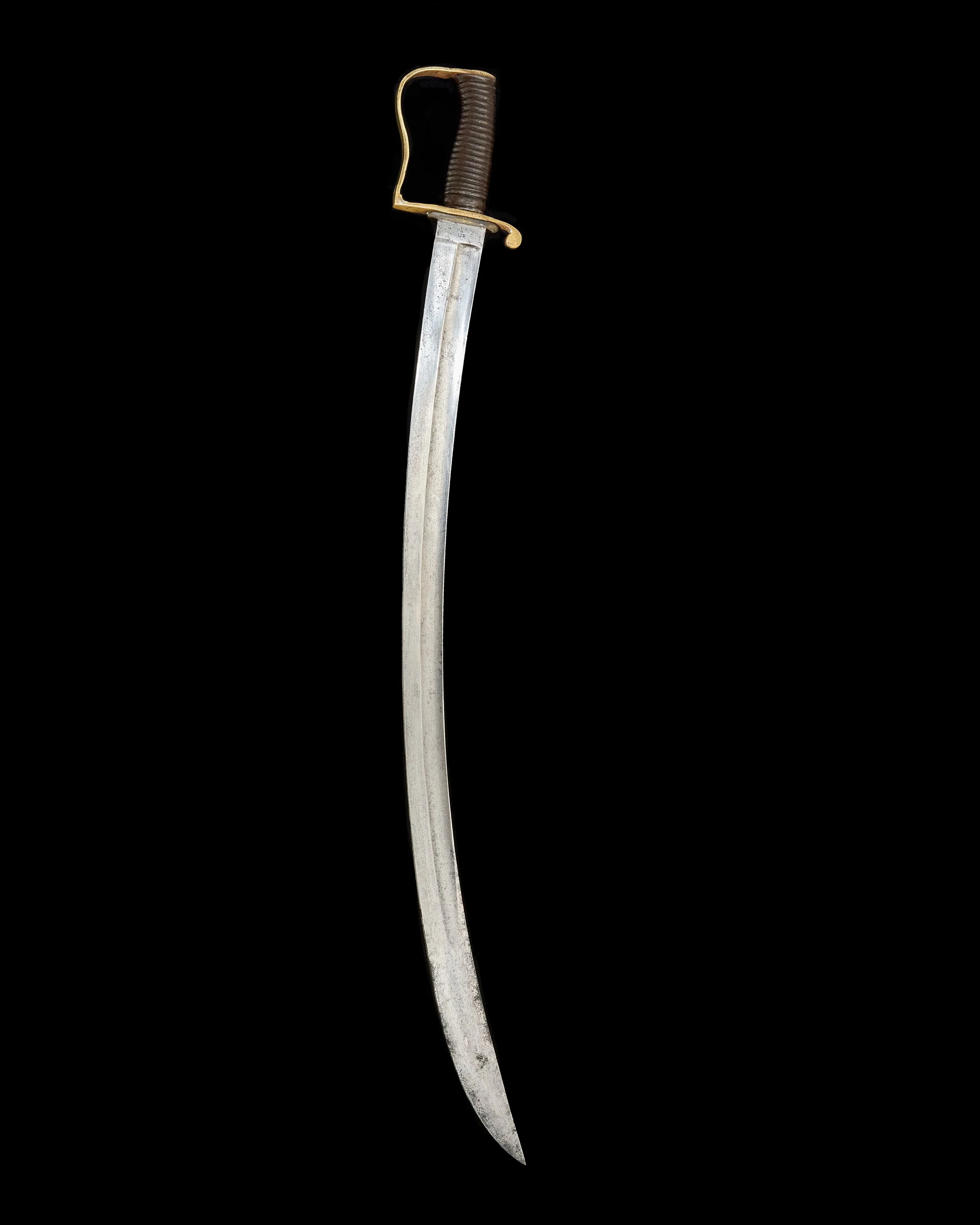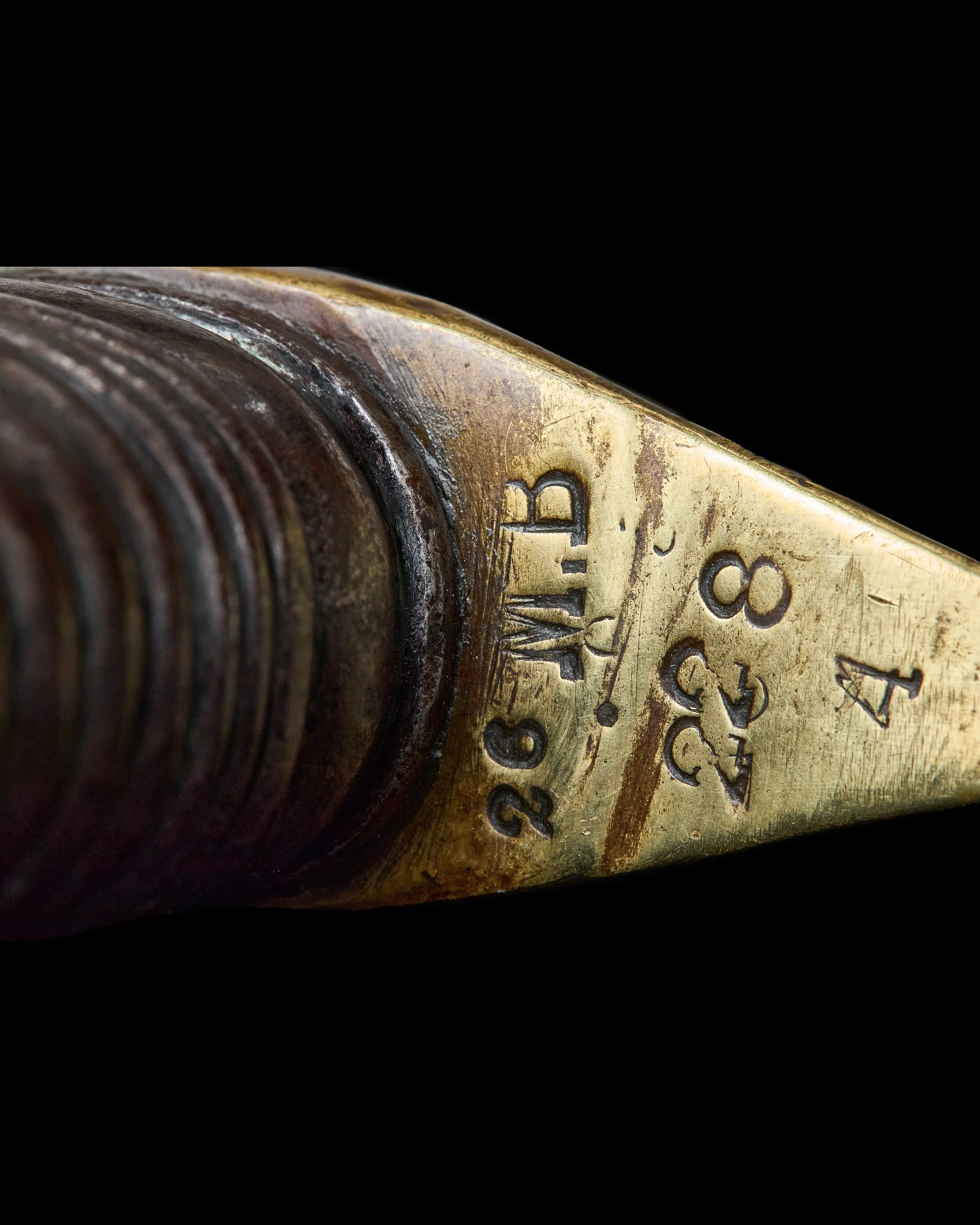 Image 1 of 7
Image 1 of 7

 Image 2 of 7
Image 2 of 7

 Image 3 of 7
Image 3 of 7

 Image 4 of 7
Image 4 of 7

 Image 5 of 7
Image 5 of 7

 Image 6 of 7
Image 6 of 7

 Image 7 of 7
Image 7 of 7








1896 pattern Indian Mountain Artillery Sabre
The mountain artillery sabre was issued to the Indian Army in 1850 when the Hazara Mountain Train was formed, by 1889 there were eight battalions. With its guns and ancillary equipment carried by mules a mountain battery could move at the same pace or faster than light infantry and a battery could be unloaded, assembled and brought into action within a few minutes. The 'world record' is probably from the Tibet Expedition of 1904 when a section of one battery brought its guns into action at a height of 17,200 feet
Both the sword is in good condition with no rust, and some minor pitting towards the tip. The mk2 scabbard over all is in a good condition. The spine is marked for Wilkinson and the has the inspection mark for the Indian army.
The guard is marked 26 M.B. 228 4. This is for the 26th Jacob's Mountain Battery, the battery can trace its origins back to Golandauze Battalion (1826). In 1843 it became the 10th Company Golandauze Battalion of Bombay Foot Artillery, and became the 26th Jacob's Mountain Battery in 1903. During the First World War, the 26th Jacob's Mountain Battery fought with great distinction at Gallipoli, Egypt, Mesopotamia and Persia. After the war, it again saw service on the Northwest Frontier. During the Second World War, it fought in the Burma Campaign as part of the 17th Indian Division.
The mountain artillery sabre was issued to the Indian Army in 1850 when the Hazara Mountain Train was formed, by 1889 there were eight battalions. With its guns and ancillary equipment carried by mules a mountain battery could move at the same pace or faster than light infantry and a battery could be unloaded, assembled and brought into action within a few minutes. The 'world record' is probably from the Tibet Expedition of 1904 when a section of one battery brought its guns into action at a height of 17,200 feet
Both the sword is in good condition with no rust, and some minor pitting towards the tip. The mk2 scabbard over all is in a good condition. The spine is marked for Wilkinson and the has the inspection mark for the Indian army.
The guard is marked 26 M.B. 228 4. This is for the 26th Jacob's Mountain Battery, the battery can trace its origins back to Golandauze Battalion (1826). In 1843 it became the 10th Company Golandauze Battalion of Bombay Foot Artillery, and became the 26th Jacob's Mountain Battery in 1903. During the First World War, the 26th Jacob's Mountain Battery fought with great distinction at Gallipoli, Egypt, Mesopotamia and Persia. After the war, it again saw service on the Northwest Frontier. During the Second World War, it fought in the Burma Campaign as part of the 17th Indian Division.
